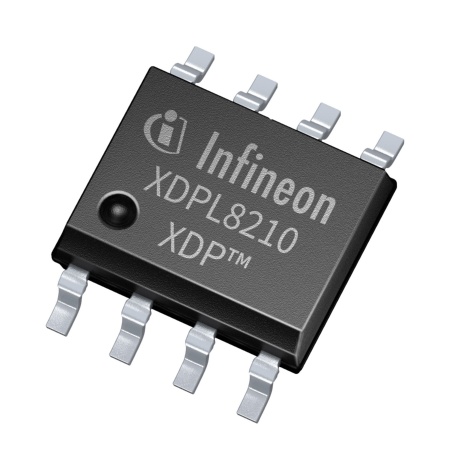 Munich, Germany – 2 August 2019 – Infineon Technologies AG (FSE: IFX / OTCQX: IFNNY) releases a new LED driver IC to its XDP™portfolio. The XDPL8210 is a constant current flyback IC with a high power factor and primary-side regulation. Key advantages of designing with XDPL8210 include outstanding functional performance for efficient designs as well as low bill-of-material (BOM) for small system cost and high flexibility. It enables excellent reliability for a long driver lifetime. For advanced products, the built-in features enable fast design cycles with little design efforts. The XDPL8210 is the best fit for innovative cost-effective, constant current, single-stage driver designs.
Munich, Germany – 2 August 2019 – Infineon Technologies AG (FSE: IFX / OTCQX: IFNNY) releases a new LED driver IC to its XDP™portfolio. The XDPL8210 is a constant current flyback IC with a high power factor and primary-side regulation. Key advantages of designing with XDPL8210 include outstanding functional performance for efficient designs as well as low bill-of-material (BOM) for small system cost and high flexibility. It enables excellent reliability for a long driver lifetime. For advanced products, the built-in features enable fast design cycles with little design efforts. The XDPL8210 is the best fit for innovative cost-effective, constant current, single-stage driver designs.
As a member of the XDPL family of LED driver ICs with a digital core, the XDPL8210 supports a great variety of LED driver products, based on the same hardware design. Therefore, it improves the supply chain efficiency by reducing efforts and cost for stock keeping. Infineon’s new IC uses a PWM dimming input signal, and modulates the output current amplitude proportional to the duty cycle. A dim-to-off mode offers a standby power of less than 100 mW. The advanced feature set is complemented by an output voltage that can be varied by a factor of three.
The excellent power factor of more than 0.9, and total harmonic distortion of less than 15 percent over a wide load and input range, reveal the outstanding product performance. The XDPL8210 fully supports the IEC61000-3-2 class C standard. This makes the device well-suited for contemporary LED luminaires. The limited power mode improves functional safety. Sophisticated algorithms provide flicker-free dimming below one percent. With this excellent light quality can even at low dimming levels be achieved.
A set of comprehensive and configurable protection modes ensure advanced product quality as well as safe and robust operation. The XDPL8210 implements an adaptive temperature guard that prevents the driver hardware from thermal wear out. Additionally, the adaptive overvoltage protection enables lower safety margins to meet safety extra low voltage (SELV) specifications.






